26 Jun 2023
Interview
IONA ROISIN: BETWEEN TIMES, PLACES, PEOPLE
Iona Roisin (b. 1989) is a British artist and poet based in Helsinki, who spent a few months in 2022 at Triangle Visual Arts Residency in New York.
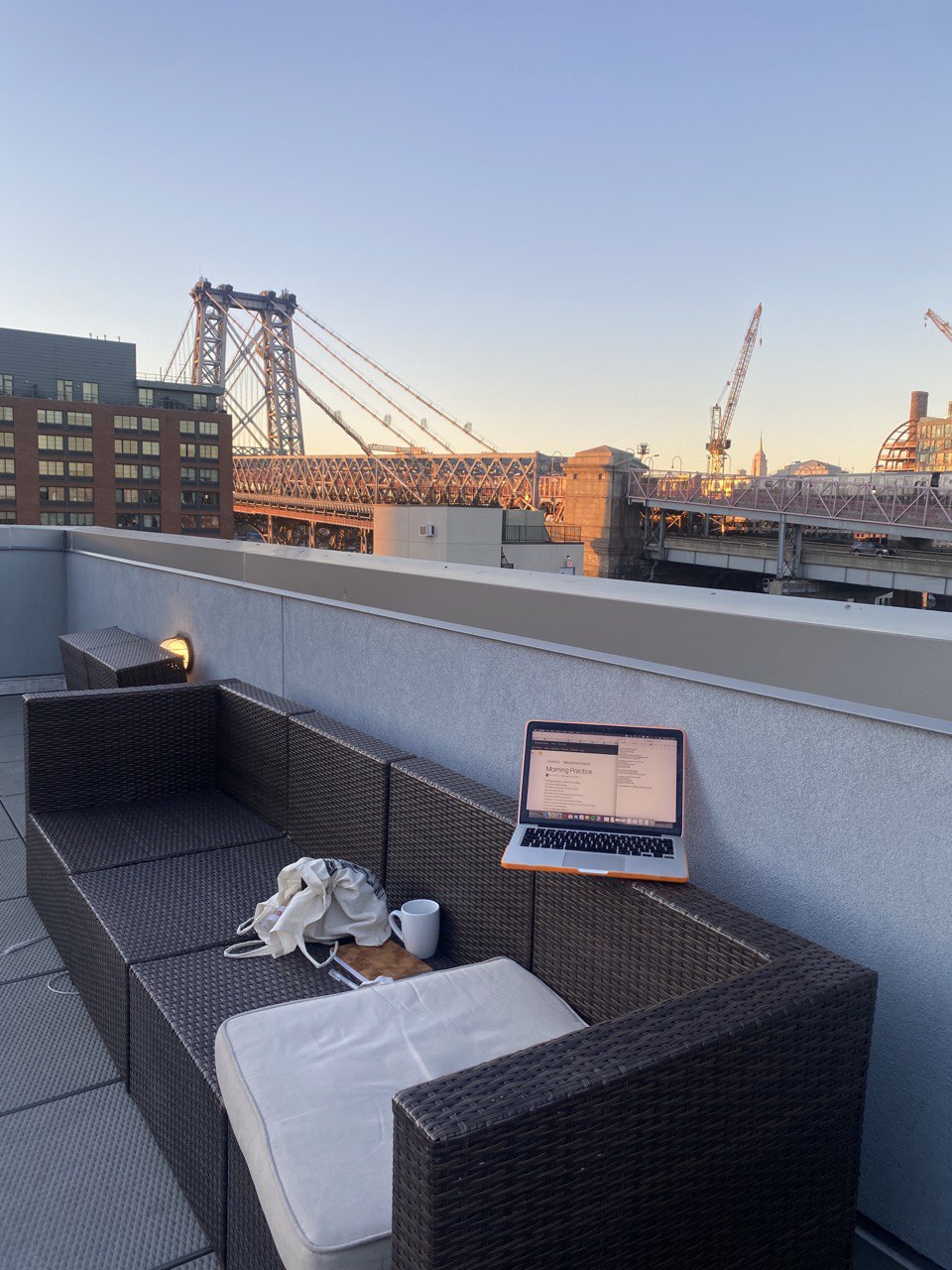
Writing on the roof and waiting for moonrise in NYC
AA: You spent several months at Triangle in New York. Had you immersed yourself in New York before or was it a new environment for you? Was it easy to form a relationship with the city?
IR: No, I had never been to America at all! In some ways it was easy to connect, but it took me a long time to settle into a rhythm, after getting so used to the slowness and ease of Helsinki. I had some kind of relationship to the city from afar, like many of us do I suppose, full of fantasies about sauntering around and being super awake to the world around me, which did happen sometimes but I don’t know if that can be a full-time state. It was kind of difficult to match the reality to my expectations, in fantasies you aren’t tired, or shy, or lost, or broke, or uninspired. I definitely felt this pressure to constantly be ‘out there’, both from myself and from the pace of life there in general.
This was my first time also being granted such a residency, so I also felt some pressure to maximise my time because I was afforded this enormous opportunity, and so to do anything other than be super productive would be… disrespectful? Wasteful? That’s a very mercenary way to view time (and artistic practice) and isn’t really my personal belief, but I think the city brought up something in me that’s usually just simmering away in the background, and isn’t so present in Helsinki.
Sometimes I forget how much creative work alternates between periods of going inwards and then periods of going outwards. This time I found myself hovering between the two, which was a strange space to be in.
So I tried to adjust my expectations based on my capacity, and to rethink what my relationship to the city could be, as well as what a ‘successful’ residency period is. I could have happily spent the whole three months just riding the bus around, letting things come and go, thinking, and being content. But even with the things I found challenging I’m ready to go back!
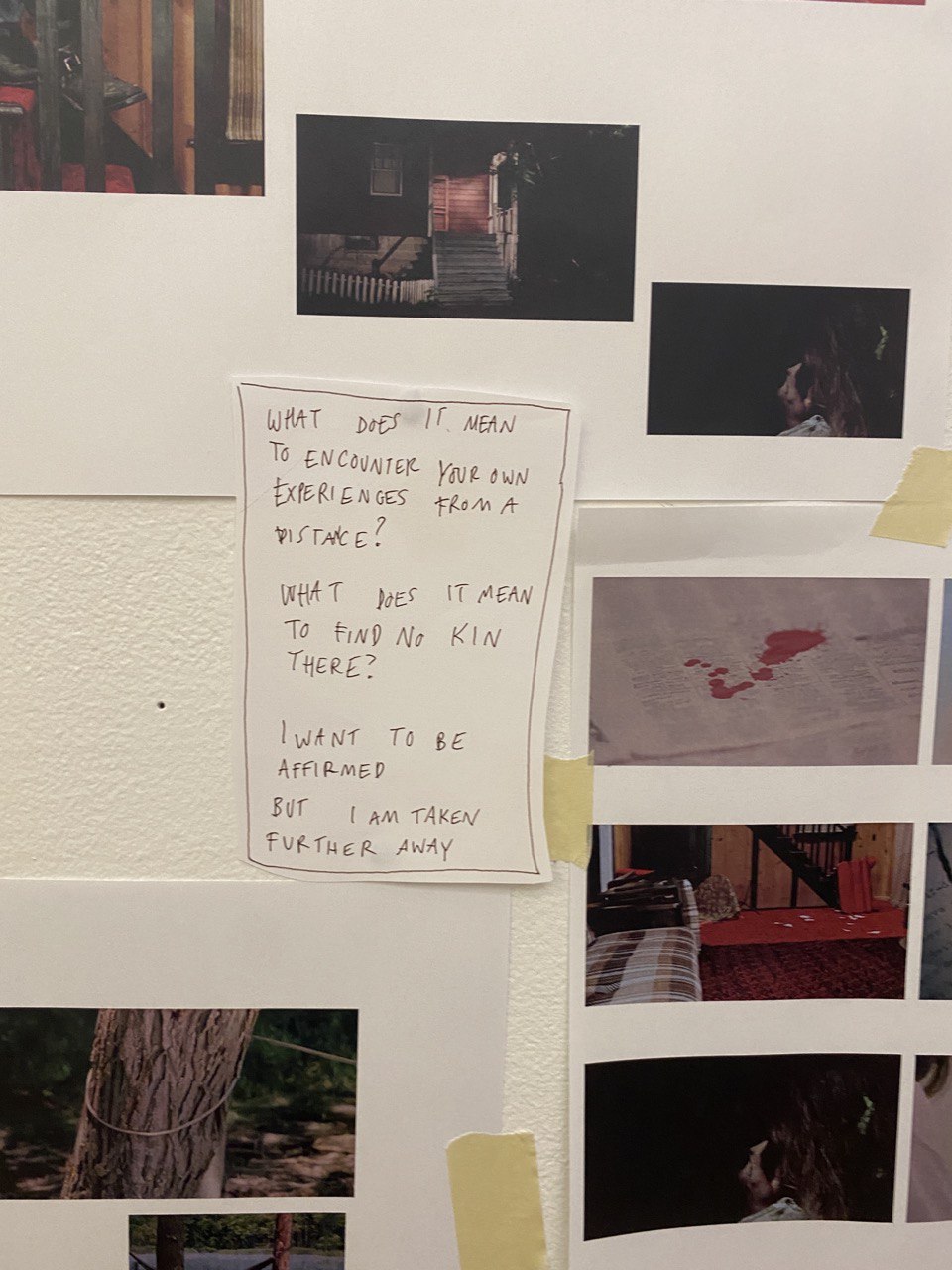
Rape revenge studio notes
AA: What did you bring back from New York? Have any ideas, first conceived at Triangle, developed into finished works or exhibitions?
IR: Yes! I had proposed to work on one project about Rape Revenge cinema, but because of covid rescheduling my residency period twice I ended up working on several different things at once.
It was challenging to work on this Rape Revenge project in the context of a residency where there’s a lot contact and meetings etc, I had to introduce the project and the context multiple times, which is normal, but because of the personal nature of the project I felt myself having to detach a bit in order to move in and out of that space. I hadn’t considered that aspect of a project like this at a residency like Triangle, which is perhaps good to know, all my previous residencies were much more solitary. This project is (still) a work in progress, but I got some good insight and support about the ways in which I can develop it further, which has been ticking away in the back of my mind while I’ve been working on other things.
I attended a few poetry classes which were super generative and exciting. I drafted some poems more related to the experience of being in America, or what being there brought up for me, like the swirl of new places and old memories that travelling brings, one of which was published in Propel Magazine recently. It was really nice to have a specific forum to reflect on the experience of being in New York, considering that wasn’t a part of my art projects.
And then I ended up needing to work a great deal on another in-progress video work An Uncountable Number of Threads which was due to be exhibited in Lappeenranta Taidemuseo a month after I returned.
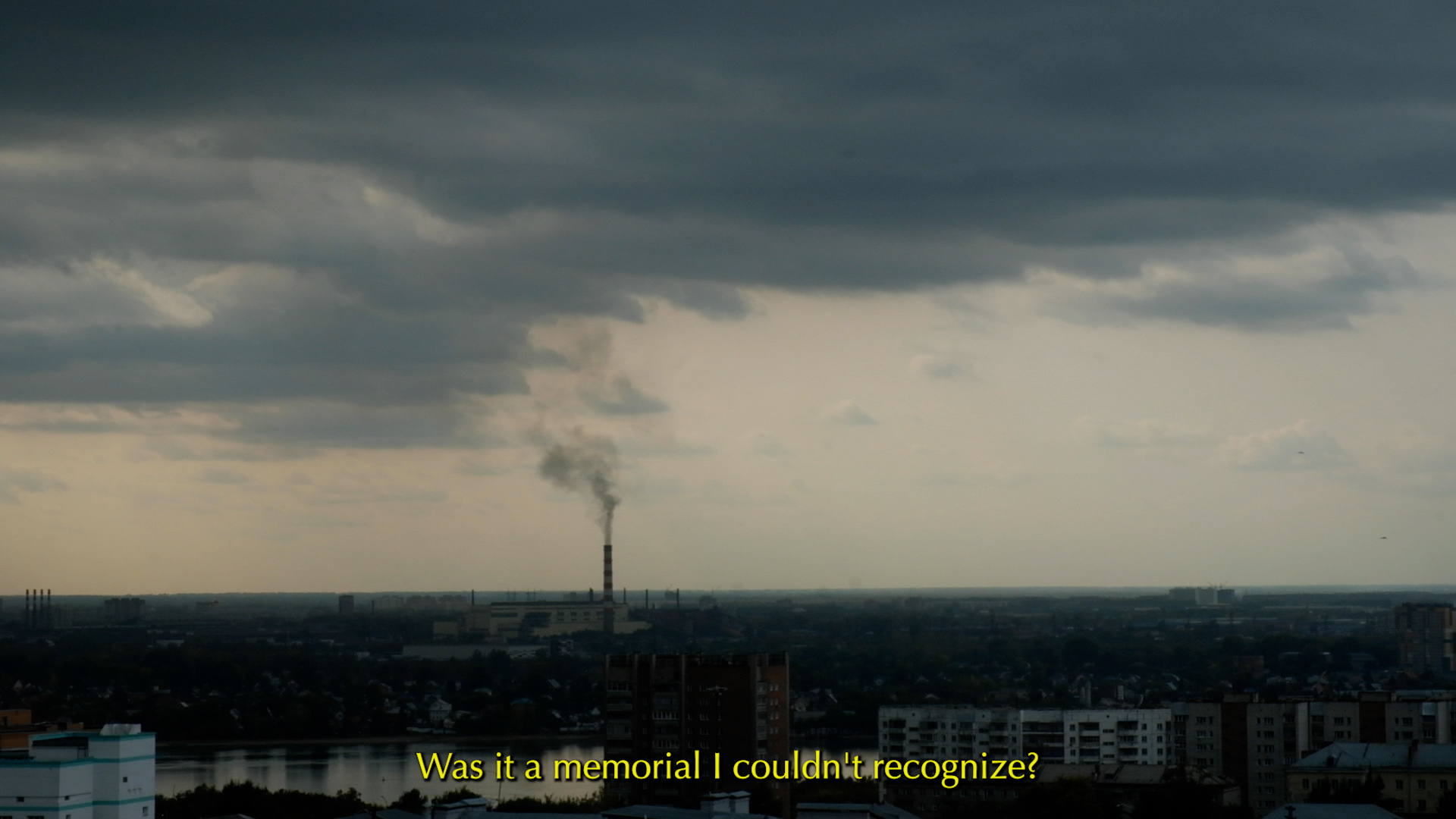
Still from An Uncountable Number of Threads (2023)
The work is a sort of travel film, or a video work about travel films, that questions itself. It’s made from footage I shot while travelling on group excursions with HIAP’s Connecting Points project, facilitated by Arttu Merimaa and Miina Hujala. In the work I was trying to engage with the ethical restrictions of a travelogue, while working with the material I gathered travelling. It was quite strange to revisit this work in America, tapping into this feeling of being an outsider, and of being small that I felt in both places, countries that are both huge and imperialist, with too many strange echoes to list here. And even though finishing off this piece at Triangle wasn’t what I intended, in the end the location really contributed to my thinking and writing for the project. Hopefully I will show this video in Helsinki soon too. Which leads nicely into your next question!
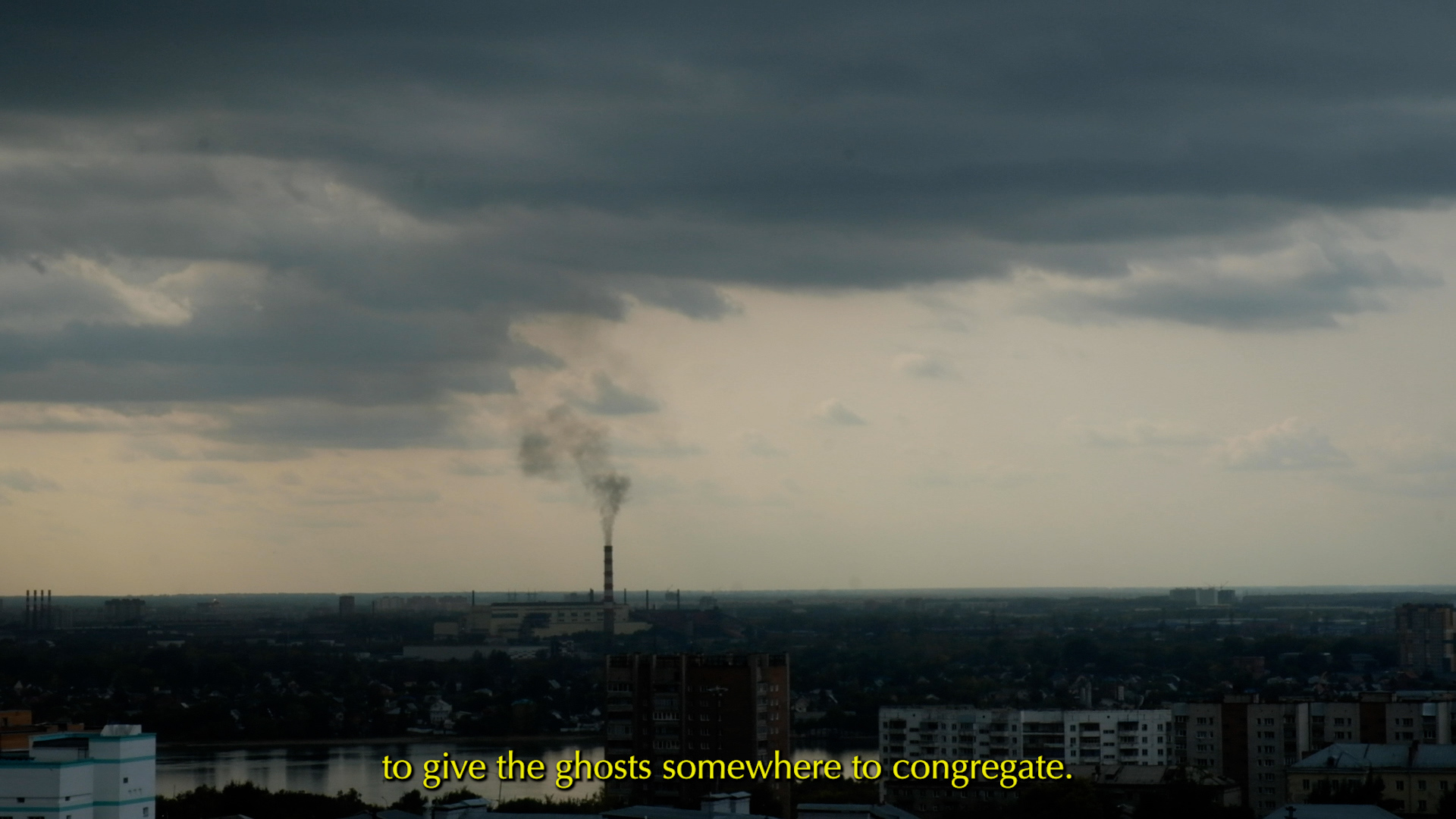
Still from An Uncountable Number of Threads (2023)
AA: You have, in your previous work, made travel films and tried to share your connections to places. The results are often very intimate and gentle. Do you feel that the places you are describing are collaborators in your practice?
IR: Thank you! Hmm perhaps I’m more at the other end of the spectrum, a bit suspicious of myself, often I feel more like I’m co-opting a place against its will, I feel nervous and aware of making sure it’s obvious that I’m filtering everything through me rather than trying to ‘be objective’ about a place, or define it. I feel like this lack of neutrality has to be a part of my works, at least at this stage in my practice.
Somehow in writing it feels a bit easier to work with places than in video. Perhaps it’s that writing feels more indirect, or closer to me, or just that there’s not the whole issue of the camera being involved. But I imagine when working with a place that you are from or that you live in for a longer time it feels more collaborative, like working with a friend, or a family member you feel indifferent to, but most of the time for me I feel like a guest.
The way being elsewhere changes time interests me too, I think some of the best poems I have written have been while away somewhere, I guess I enjoy how the newness of a context can interweave with all the baggage you bring with you, and how new things prompt you to regard your own things in a surprising way. Now I’m thinking of places as like a therapist or analyst rather than a collaborator hmm…
But I would be very interested to think more about ‘tourism’ in future projects, and to not try to maintain this distance between a ‘travelling artist’ and a tourist, as we rely so much on the same structures and industries. I began to scratch at this in ‘An Uncountable Number of Threads’ but there’s much more to get into. In my family my parents spent their pre-parent years travelling around together for long periods of time on a shoestring, and it is a big part of their identity, perhaps even one of the biggest parts. I have felt critical of this over the years, but as I age I feel more able to step back and be curious about what that means for them and people like them.
AA: In your work, how do your words and images meet?
IR: Hmm tricky! It’s something I do so unthinkingly, or rather what comes most naturally to me. When I was younger I used to draw primarily, all images and text mixed together. At some point in my arts education this got ironed out of me, but my compulsion to always pair some kind of image with text stayed.
If I sit down to make something specific, usually words (language, phrases, voice, song) come first, images I collect as I travel around or remember to bring my camera out but I would like to become more intentional and consistent with this, and someday have a footage archive that I can pull from often.
In general I don’t find myself to be a very image-oriented person, in how I think or how I imagine, even if my writing depends a lot on images. I have a hard time making an image just for the sake of it, which is sad, and I think when I’m shooting out and about I’m attracted to the feeling of the place mostly. But yeah I really think this is something that my BA in the UK affected, and how arts education there seemed to discourage this urge to make for pleasure or to just follow the thread of an interest. I got this impression that everything needs to have a reason from the very first moment, and that meaning can only come from that. I don’t agree with this and would really like to shed this idea but it takes time. Probably I rely so heavily on words because of this, and I learnt to shape and affect meaning and feeling in writing in a way that never felt so fluent in image.
Sometimes it feels like a hard thing to reconcile with when I want to make moving image, how to not make the visual an afterthought, or is it ok for the image to be subservient to the other elements? Anyway they inform each other, in mood, in atmosphere, and I hope that in the things I make now the image and the text help each other to unfold.
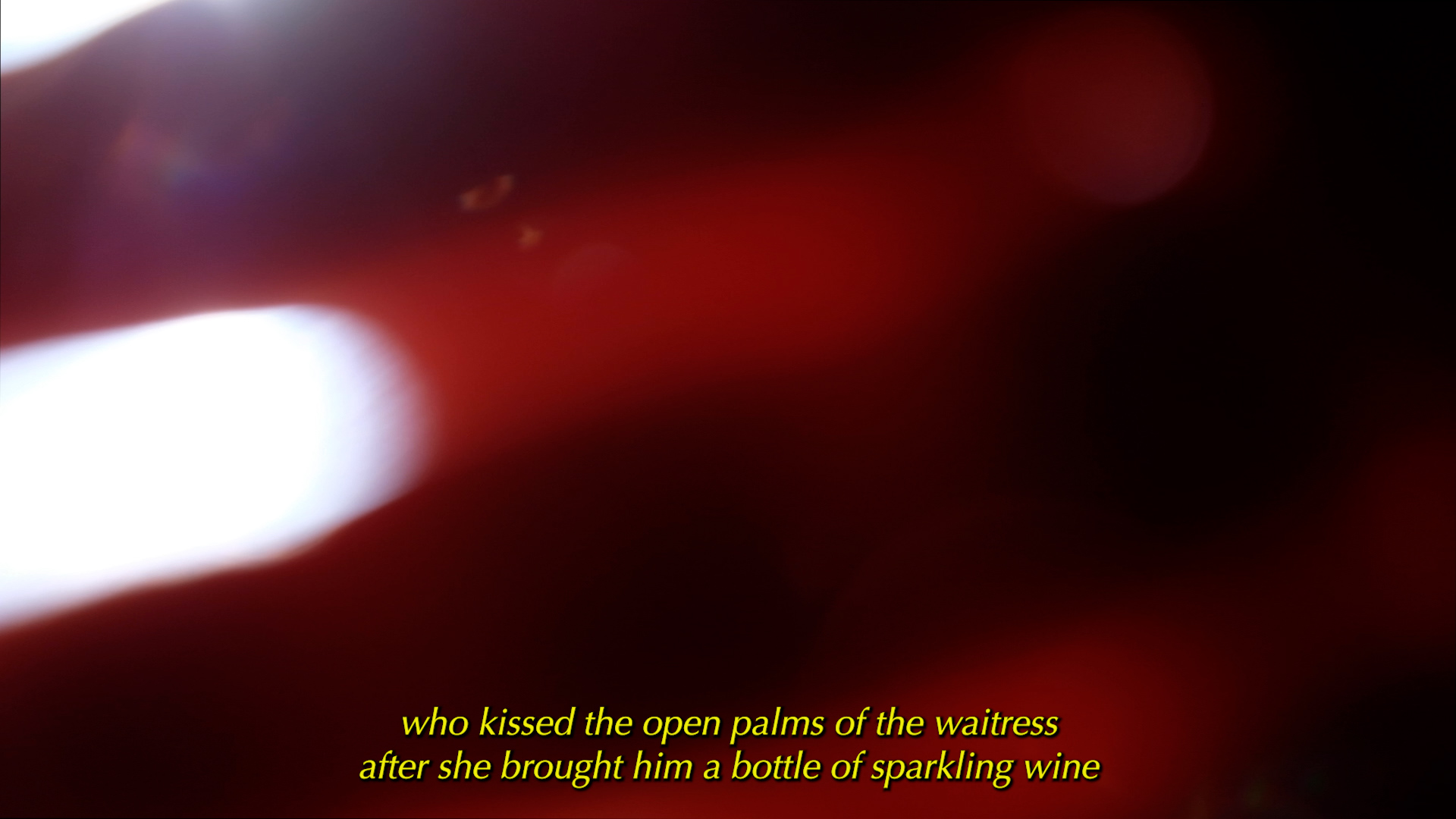
Still from An Uncountable Number of Threads (2023)
AA: Some of your past works have a very sensitive, almost quiet way of addressing memory, personal experiences and the need to share them with others. Do you feel that there is a relationship between nostalgia and connecting?
IR: I find nostalgia as a quality or tactic very interesting and often alluring, but I’m also wary, considering the ways we see it weaponised at this moment in time. It’s curious to me how nostalgia relies on its relationship to history, but is not really rooted in the past, and often has such a narrow perspective. Of course personal nostalgia is different from cultural nostalgia but in either case, it needs to be detached from its origin somehow. So the relationship between nostalgia and connection seems to me like a sort of shortcut to feeling.
In the project I worked on with Connecting Points, where we made excursions across Russia and Eastern Finland, nostalgia became something I used as an access point into cultures and countries that I am ignorant of and can never deeply know. Engaging with the nostalgic elements of a culture, e.g. music, style, cartoon characters, movies, kitsch etc. feels possible, because there’s so much one can recognise from one’s own individual world of nostalgia. So in this context nostalgia functioning as a bridge was helpful.
It feels complicated to intentionally use nostalgic elements in my work or to make work about it. I would want to be more self-aware than I am, even if I have a relationship to the subject by virtue of being a person in the world. And in terms of work that draws more from my own life, I think nostalgia is there mainly in relation to my distrust of memory. Even if it’s not a thing to be read like a record, its selectiveness is troubling to me. For so many years when I was working more actively with trauma, and trauma-time, working with memory was unavoidable. These days it seems to be less about purging, and more about unearthing the connective tissue between times, places, people.
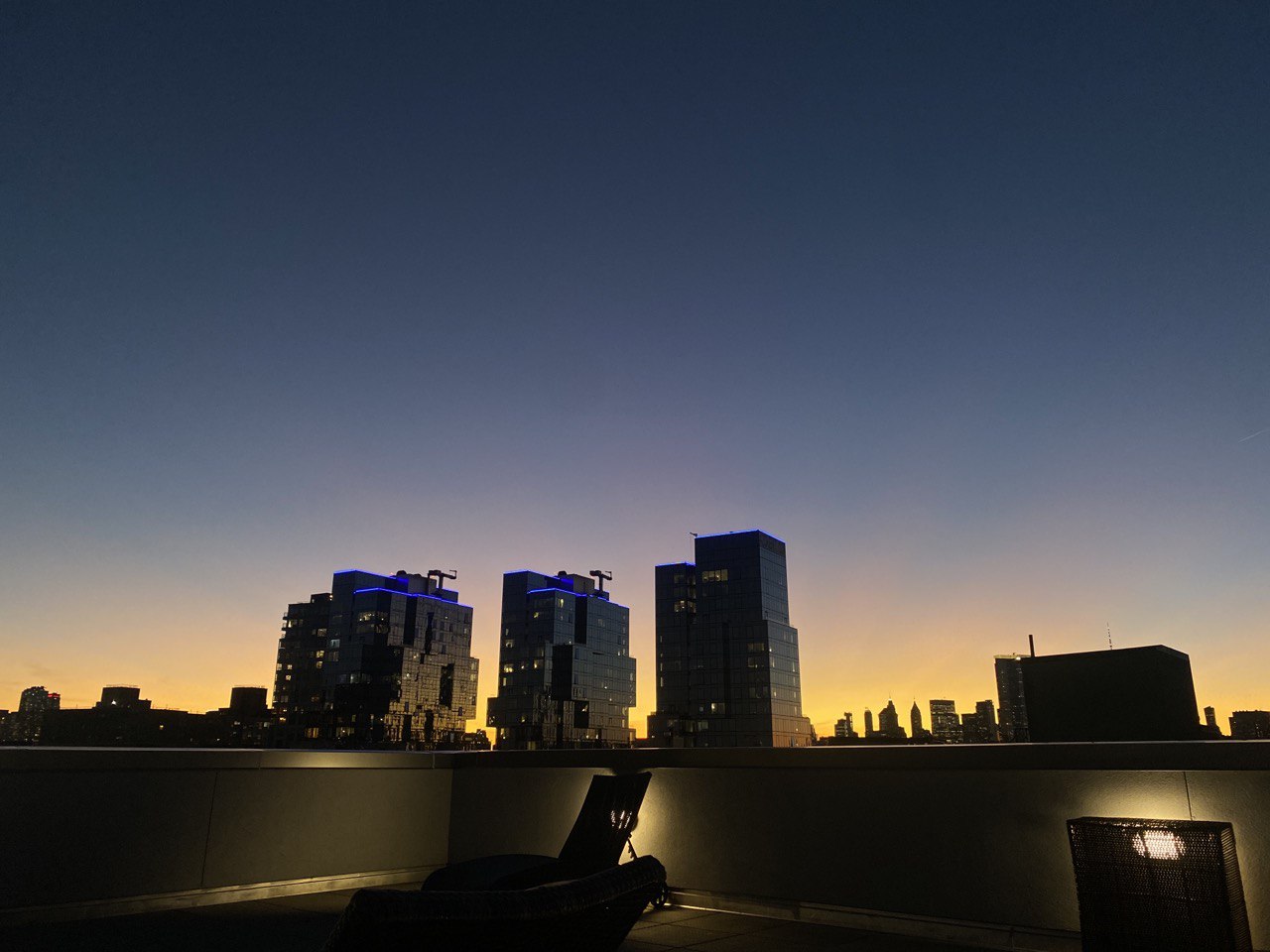
Nightfall from the roof terrace
Finnish Cultural Foundation’s residency programme is maintained and developed in collaboration with HIAP – Helsinki International Artist Programme.
Photos provided by the artist.
More:
https://ionaroisin.com
